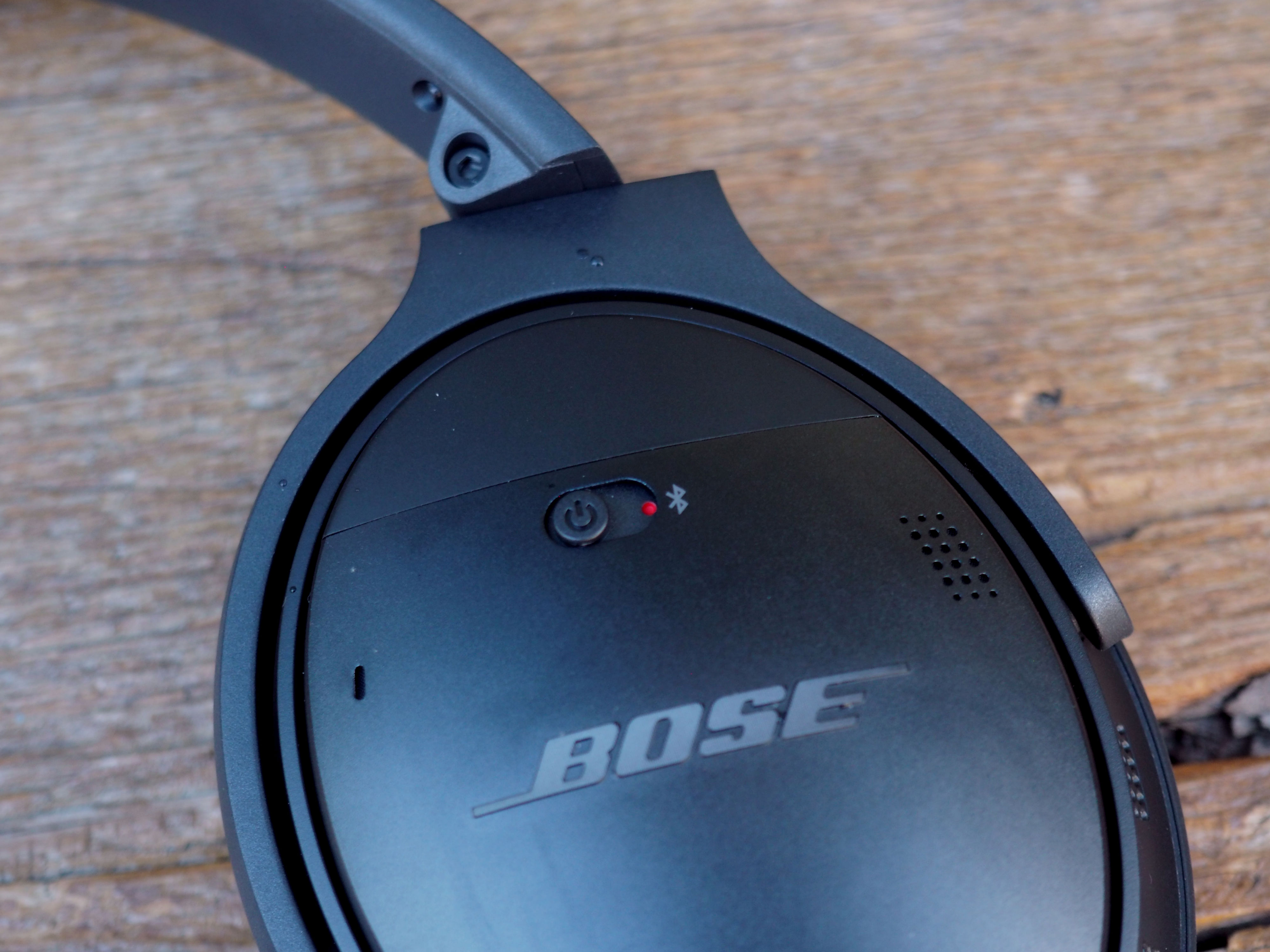Bose took its damn time.
It’s not always the wisest policy in this fast-moving world of consumer electronics, but as countless competitors pushed past to bring wireless noise cancelling headphones to market, the audio company whose name has long been synonymous with active noise canceling bided its time.Announced among a trio of new products, the QuietComfort 35 is the product Bose fans have been waiting for. Not the QuietControl 30 earbuds or the Jaybird-like SoundSport. The 35s are the Boseist of the bunch, a Bluetooth update to the company’s iconic line of airplane ubiquitous over the ear headphones, a wireless take on the popular QuietComfort 25.
While a number of eager travelers have no doubt jumped ship for faster-to-market companies like JBL and Samsung, diehard Boseheads will be happy they waited assuming, of course, they don’t balk at the $349 price tag.
At a Glance
- First wireless QuietComfort headphones
- Active noise-cancelling
- 20 hours listed battery life
- $349
Pros
- Good sound, great noise cancelling
- Comfortable
- Good battery
Cons
- Pricey
- Heavier than wired model
- Only one noise-cancelling setting

Comfortably familiar
Bose’s first wireless noise-cancelling headphones (last year’s SoundLink did the wireless thing without the noise-cancelling bit) look, well, familiar to anyone who’s ever spotted a pair of the company’s headphones dangling from a rock at one of their local airport’s 45 Hudson News locations. And that’s not a bad thing. Beats and innumerable other companies have you covered if you’re looking for something flashy. Bose’s QC line is designed to look equally appropriate with a business suit or the pair of flannel pajamas you wore to the airport in anticipation of a redeye flight.
The QC35 ships in either black or silver – the company sent us the former, the even more understated of the two. The ear cups are large and offer a healthy amount of cushioning that should sit comfortably around most ears. They’re connected to the headband with a hinge that pivots more than 90 degrees, both to assure a better fit and to help the headphones collapse down to fit into their compact carrying case.

All of the buttons are positioned on the right cup, including a power switch on the side and volume up and down flanking play/pause button on the bottom. Bose opted not to go with the touch functionality favored by companies like Parrot, and while it feels a bit more old fashioned perhaps, there’s a lot less likelihood of triggering a function by accident.
Just below the trio of buttons are two lights displaying the status of Bluetooth connectivity and battery life. Below that is the microUSB charging port, with an auxiliary input jack in the same spot on the other cup for when the battery runs out – or you find yourself needing to plug in to a system without wireless transmission (like, say, your in-flight entertainment system).
At 10.9 ounces, the QC35 comes in at four ounces more than its wired predecessor, owing at least in part to the addition of Bluetooth radios. Even so, the headphones are fairly lightweight, and all said, quite comfortable, more than living up to their name. It’s easy to imagine donning them for a cross-country flight without thinking twice.

The sound of quiet
Bose reached out before sending along the review unit to explain, in part, what took so long for the QuietComfort to go wireless. The answer, in part, comes down to the limitations of Bluetooth technology. While the wireless technology isn’t quite up to its tethered counterpart, it still sounds pretty darn good – enough so that the majority of listeners likely won’t detect much difference.
The result is a really good sounding headset worthy of the company’s stamp of approval – and worth the wait. The headphones are crisp and clear, even at high volumes and Bose does an admirable job servicing both the high and low end. Some reviewers have encountered distortion at top volumes, but things sounded clear and warm to me throughout.
The company has, of course, mastered the art of noise canceling. The active technology, coupled with the seal formed with the ear cups does a great job filtering out ambient noise from the outside world. Here in the office, it’s completely removed the hum of the air conditioning and will no doubt do wonders on a passenger jet engine. It doesn’t drown out the outside world completely, of course. I can still hear the thuds of the construction outside, though it would still be nice if the headphones let you toggle between noise cancelling levels for additional situational awareness.

Staying alive
Pairing is a cinch. You can either do it through the standard methods or using the Bose Connect app, which exists for the sole purpose of connecting the company’s headphones and swapping between devices.
As for battery, the company has it rated at 20 hours. Unlike past QuietComfort models, this one is rechargeable. That’s mostly good news, as you won’t be dealing with the pain, cost, and environmental fallout of cycling through AAAs. The downside in the recharge every couple of days – and the fact that you can’t swap out batteries yourself.
But there’s plenty of juice on-board. I would, say, be able to get from here to Hong Kong without running out of charge. And, if I did, there’s good news on that front, too – you can just plug the headphones in and listen that way after the battery peters out.

Worth the wait
At $349, the QuietComfort 35 runs $50 more than its predecessor. They’re not exactly cheap, but between the good sound quality, excellent noise canceling, extreme comfort and long battery life, these are exactly the pair of headphones fans have been waiting for Bose to deliver.































Comment